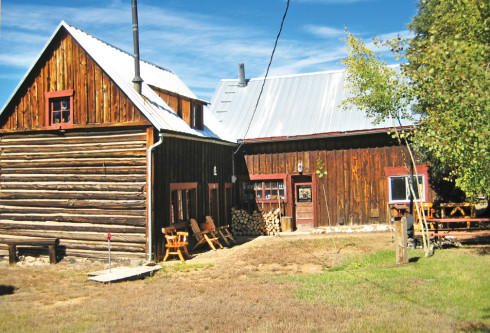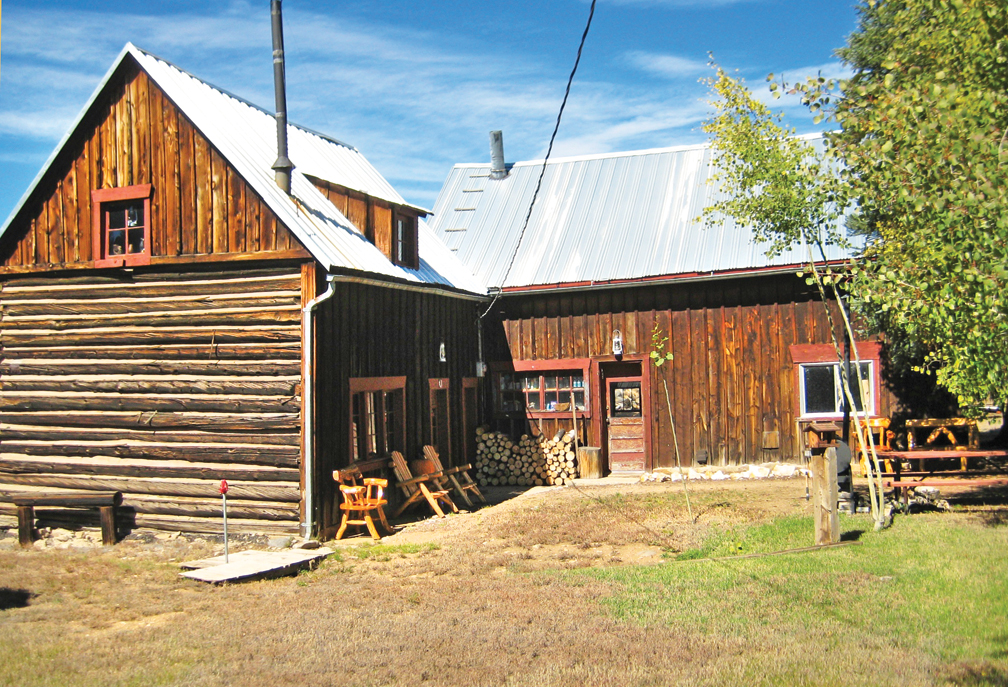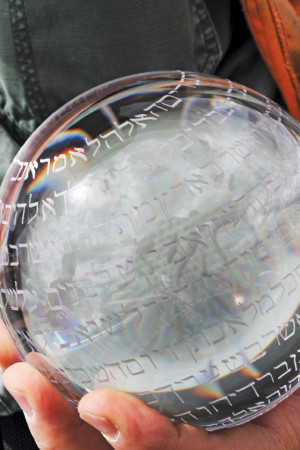By Fay Golson for The Chaffee County Heritage Area Advisory Board
This Granite stage stop and Livery Stable is the fifth property featured from the Chaffee County Historic Resources Survey completed this summer. Granite was spawned by the stampede of prospectors struck by gold fever. The initial gold discovery in 1860 by G.A. Kelley along the Arkansas River – about four miles south of the present day town of Granite – was on a gravel bar later to take the name Kelley’s Bar. Just to the north, Cache Creek became an even more profitable site. Virginia McConnell Simmons in The Upper Arkansas, A Mountain River Valley states it precisely: “Granite’s role in the life of this area went back to 1860, when the entire section along the Arkansas from Kelley’s Bar on the south to Cache Creek on the north was lined with prospectors’ tents. But Granite was simply a suburb of the placer camps, particularly of Cache Creek.”

By 1862, Granite had a population of 1,500 to 2,000 inhabitants. It soon developed as a center of commerce and settlement. The stage stop was already firmly situated in 1861 and would soon be joined by saloons, billiard halls, a boarding house, assay office, livery stable, blacksmith shop and schoolhouse, a total of forty buildings. To expedite the prospecting process, a stamp mill, used to crush ore and extract the gold from the host material, was built in 1867.
Being the hub of all traffic for Twin Lakes, Clear Creek, Low Pass and Hawkinsville it is understandable that the stage coach enterprise required a rest stop for travelers and horses in Granite. The town sat at the northern end of the stage route between Cañon City and Leadville. *
An amusing account, from A Colorado History, by Ubbelohda, Benson and Smith, tells of the impression of stage travel by a foreign traveler. “The coaches traveled continuously, day and night. Short stops were made along the way at stage or relay stations that would be distinctive features of prairie travel until the lines no longer operated. The stations always provided a source of amusement to foreign visitors. A French traveler described them: ‘At the relay station you will find waiting a hand basin and a pitcher of water, with soap and a towel that turns endlessly around a roller. You will find mirrors, combs and brushes, and even toothbrushes, all fastened by a long string, so that everyone may help himself and no one will carry them off. You might laugh in Paris at these democratic customs; here they are accepted by all and are even welcome, except perhaps for the toothbrush, which is regarded with a suspicious eye.’”
The Granite Stage Stop is the only building left in Granite dating from the Cache Creek boom. In the early 1880s it was enlarged to become the Commercial Hotel. The Buena Vista Democrat reported, “…the Commercial sets the best table of any hotel in Granite.” Articles from another publication indicated the Commercial Hotel afforded the best hotel accommodation: “Everything about the place is neat, clean and pleasant, and the table is supplied with the best the market affords.” Room rates were $1.50 per day. It operated as a hotel through 1910 and had many owners during its time of operation. It is now a private residence.
The date of construction for the Granite Livery Stable and Blacksmith Shop located on the adjacent lot has not been confirmed by historical documents, but it is thought to be in the 1880s. It is reasonable to believe that it provided the next-door stage stop and hotel with a service necessary for its operation. From the research by the Front Range Resource Associates, the consultants performing the Historic Resource Survey, the business was a complete and well-appointed blacksmith and wagon shop and was owned by Ben Eastman, one of the best blacksmiths in the country. It has passed through several owners in tandem with the hotel.
These buildings are significant for their architecture and are fine examples of pioneer log construction. Few of the early log buildings from this period remain in Granite. They are also important in the area of commerce. The stage stop and the livery stable played an integral part in the existence of the town and supplied travelers and horse teams with food, shelter and necessary repairs. The stage stop and hotel has an L-shaped footprint with a gabled roof, while the livery stable and blacksmith shop is of a rectangular shape with a gabled roof. The story of transportation in Colorado’s rough and mountainous terrain is a testament to high courage, eventful daring and fortitude.g
* For an informative article about the route refer to the September 2008 issue of Colorado Central Magazine; The Stage Road from Cañon City to Leadville by Alan Robinson. It can be accessed through the archives of www.coloradocentralmagazine.com. Robinson indicates that: “Stage stations were developed at intervals of 15 to 20 miles, which was the distance a team of horses could reasonably last.”
Fay Golson is a preservationist, artist and aspiring writer living in Chaffee County, an area brimming with historic resources. She has authored several National Register of Historic Places Nominations and now can be found in her Salida art studio or among the stacks at the Salida Regional Library frantically searching for historic references.



